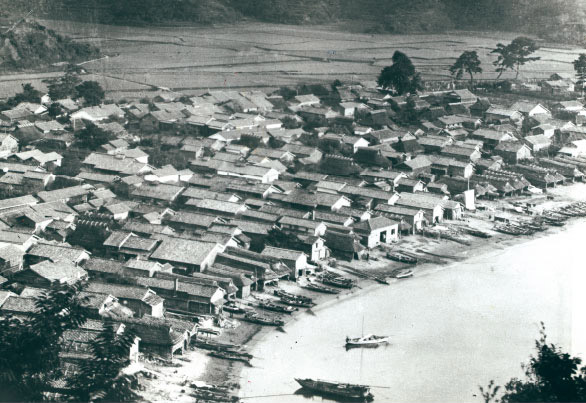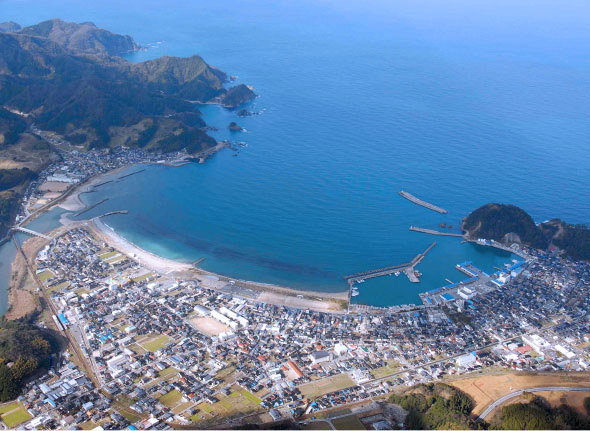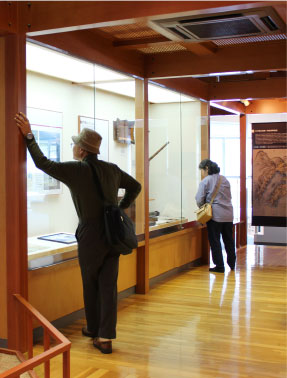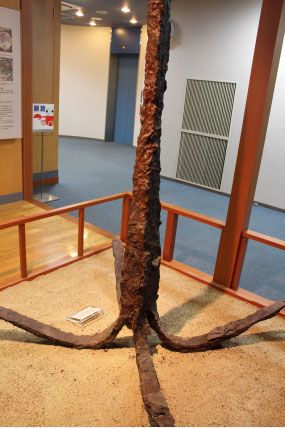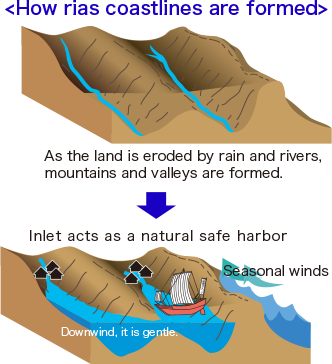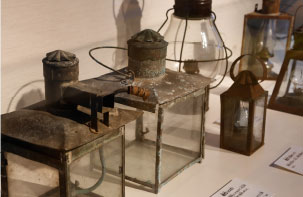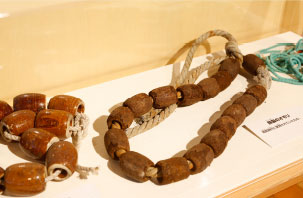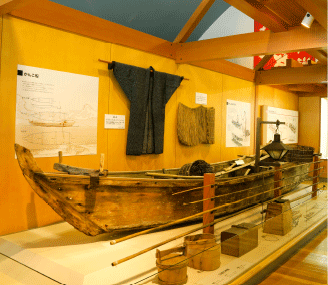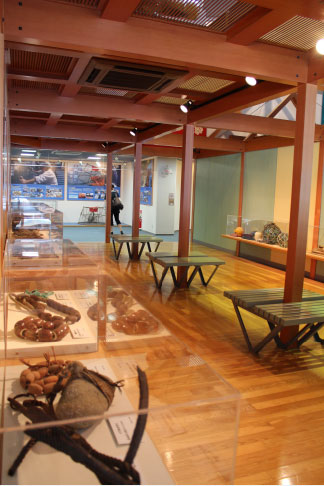The history of the Kitamaebune shipping route is showcased alongside traditional fishing implements to describe the backstory of Kasumi’s fishing trade.
![]()
The Kitamaebune shipping route and rias Kasumi coastline
Models of Kitamaebune ships and four-pronged anchors are used to describe how the shipping route worked in olden days.
In the early Edo era (1603-1868), merchants developed a trade route making its way from Osaka and down through Shimonoseki, then going to the northeast and Hokkaido. They carried the annual rice tax to the shogunate on boats and found the bay in Shibayama to be favorable.
Shibayama harbor, which has a deep inlet and is still used today for evacuation purposes, and Imagoura were uninhabited beaches, but they were conveniently poised to take in ships due to the open beach on the west side. Island outcroppings like Kurojima Island and Shiraishi Island curbed the turbulent waves and made the bay an excellent place to wait out storms.
Ships in those days were of the Kitamaebune style, which required many oarsmen to row oars against the winds. The areas around Senjo-jiki in Imagoura and rocky areas along the pedestrian paths of the coastline still show signs of the pillars and holes created there for mooring, as well as holes passing through rocks and used to tie nets.

History of the growth of Kasumi harbor
The history of fishing in Kasumi is explained through informative panels that touch on the accomplishments of a Mr. Cho, who opened it for business.
Kasumi harbor is today one of the leading fishing grounds on the Sea of Japan for crab and other seafood. However, in the Meiji era (1868-1912), Kasumi was a fishing village facing a wide shallow beach (shoal), so fishing was performed only by small sailboats and dragnets.
In the Taisho era (1912-1927), Shibayama and Tsuiyama (modern-day Toyooka) rapidly began employing motor-powered fishing boats, which led to a vast increase in their hauls. Kasumi caught wind of this, and resident Jiroichi Hamamoto was the first to build the Kaiun-maru, a motorized ship.
After much trial and error, he succeeded in getting it to run stably. Hauls increased, and soon villagers wanted to shore up the harbor to allow for these motorized boats to set anchor there. Hiroshi Cho, the mayor of Kasumi and first chair of the fisherman’s union, as well as a member of the prefectural council, repeatedly appealed to the national government the need to take on this project, but was rebuffed for many years. He eventually fell ill and passed away in 1921. This desire to improve the harbor was passed on to his son, Kosaku. Like his late father, Kosaku became the head of the local fishing cooperative and the village mayor of Kasumi-mura (and later of Kasumi-cho). He treated revamping the Kasumi fishing port as pivotal to the village, and worked with residents to have it recognized as a project deserving of national subsidies in 1928. In July of that year, the groundbreaking ceremony was held with residents and fishing industry personnel in attendance.

